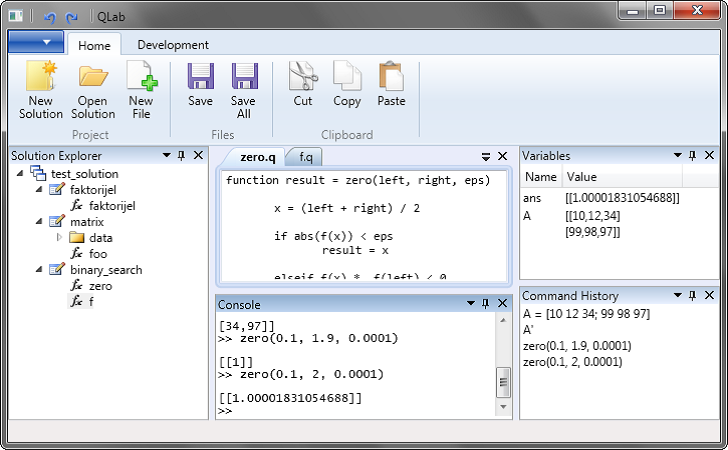
- #QLAB FOR WINDOWS FREE DOWNLOAD MANUAL#
- #QLAB FOR WINDOWS FREE DOWNLOAD FULL#
- #QLAB FOR WINDOWS FREE DOWNLOAD REGISTRATION#
The proposed method effectively overcame the 3D echocardiography's challenges: high dimensional data, complex anatomical environments, and limited annotation data. We proposed a novel efficient method for 3D left ventricle (LV) segmentation on echocardiography, which is important for cardiac disease diagnosis. For the estimation of clinical indices, our MV-RAN method has also demonstrated great promise and will undoubtedly propel forward the understanding of pathophysiological processes, computer-aided diagnosis and personalised prognosis using echocardiography. Compared to other state-of-the-art deep learning based methods, the MV-RAN method has achieved significantly superior results (0.92 ± 0.04 Dice scores) for the segmentation of the left ventricle on the independent testing datasets. Experiments have been carried out on multicentre and multi-scanner clinical studies consisting of spatio-temporal (2D + t) datasets.
#QLAB FOR WINDOWS FREE DOWNLOAD FULL#
To tackle these challenges, a multiview recurrent aggregation network (MV-RAN) has been developed for the echocardiographic sequences segmentation with the full cardiac cycle analysis. In addition, for a better interpretation of pathophysiological processes, clinical decision-making and prognosis, such cardiac anatomy segmentation and quantitative analysis of various clinical indices should ideally be performed for the data covering the full cardiac cycle. Nevertheless, it is still challenging because of limited training data, a poor signal-to-noise ratio of the echocardiographic data, and large variances across views for a joint learning. The advantage of multiview based learning fits the purpose of segmenting cardiac anatomy from multiview echocardiography, which is a non-invasive, low-cost and low-risk imaging modality.


Multiview based learning has generally returned dividends in performance because additional information can be extracted for the representation of the diversity of different views.
#QLAB FOR WINDOWS FREE DOWNLOAD REGISTRATION#
The method performed well compared to the four other registration algorithms. The segmentation approach yielded the following results over the cardiac cycle: a mean absolute difference of 1.01 (0.21) mm, a Hausdorff distance of 4.41 (1.43) mm, and a Dice overlap score of 0.93 (0.02).Conclusion
#QLAB FOR WINDOWS FREE DOWNLOAD MANUAL#
Advantages of the method include no dependence on prior geometrical information, training data, or registration from an atlas.ResultsThe method was evaluated using three-dimensional ultrasound scan sequences from 18 patients from the Mazankowski Alberta Heart Institute, Edmonton, Canada, and compared to manual delineations provided by an expert cardiologist and four other registration algorithms. The method requires minimal user interaction and relies on a diffeomorphic registration approach. We propose a semi-automated segmentation algorithm for the delineation of the left ventricle in temporal 3D echocardiography sequences. However, delineation of the left ventricle is challenging due to the inherent properties of ultrasound imaging, such as the presence of speckle noise and the low signal-to-noise ratio.Methods PurposeEchocardiography is commonly used as a non-invasive imaging tool in clinical practice for the assessment of cardiac function. Conclusions: The method performed well compared to the four other registration algorithms. The segmentation approach yielded the following results over the cardiac cycle: a mean absolute difference of 1.01 (0.21) mm, a Hausdorff distance of 4.41 (1.43) mm, and a Dice overlap score of 0.93 (0.02). Results: The method was evaluated using three-dimensional ultrasound scan sequences from 18 patients from the Mazankowski Alberta Heart Institute, Edmonton, Canada, and compared to manual delineations provided by an expert cardiologist and four other registration algorithms. Advantages of the method include no dependence on prior geometrical information, training data, or registration from an atlas. Methods: We propose a semi-automated segmentation algorithm for the delineation of the left ventricle in temporal 3D echocardiography sequences. However, delineation of the left ventricle is challenging due to the inherent properties of ultrasound imaging, such as the presence of speckle noise and the low signal-to-noise ratio. Purpose: Echocardiography is commonly used as a non-invasive imaging tool in clinical practice for the assessment of cardiac function.


 0 kommentar(er)
0 kommentar(er)
